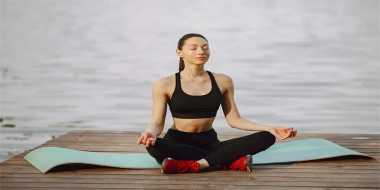

Environmental Hygiene: Keeping Your Surroundings Clean
22/06/2024 Amanda C. 1548
Maintaining a clean environment is not just about aesthetics; it significantly impacts our health, well-being, and quality of life. From our homes to workplaces, ensuring environmental hygiene plays a crucial role in preventing diseases, promoting mental clarity, and fostering overall comfort. In this blog, we will explore the importance of a clean environment, provide strategies for effective cleaning and disinfection, and discuss the role of ventilation and air quality in maintaining a healthy living and working space.
The Impact of a Clean Environment on Health and Well-being
Physical Health Benefits:
A clean environment contributes to:
-
Reduced Spread of Infections: Regular cleaning and disinfection of surfaces help prevent the transmission of pathogens such as bacteria and viruses.
-
Allergen Control: Removing dust, mold, and pet dander reduces allergens that can trigger respiratory issues like asthma and allergies.
-
Prevention of Accidents: Keeping floors clear of clutter and spills reduces the risk of slips, trips, and falls.
Mental and Emotional Well-being:
-
Stress Reduction: A clutter-free and organized environment promotes mental clarity and reduces stress levels.
-
Improved Productivity: A clean workspace enhances focus and productivity by minimizing distractions and creating a conducive environment for work or study.
-
Enhanced Mood: Living and working in a clean environment can elevate mood and overall sense of well-being.
Strategies for Cleaning and Disinfecting Your Home and Workplace
1. Establish a Cleaning Routine:
-
Regular Schedule: Set aside specific times for cleaning tasks to maintain consistency.
-
Divide Tasks: Assign different cleaning responsibilities or areas to household members or colleagues.
2. Use Effective Cleaning Products:
-
Choosing Cleaners: Select appropriate cleaners for different surfaces (e.g., disinfectants for high-touch surfaces, glass cleaners for windows).
-
Safety Considerations: Follow instructions and safety precautions when using cleaning products to minimize health risks.
3. Focus on High-Touch Areas:
-
Common Areas: Disinfect frequently touched surfaces such as doorknobs, light switches, countertops, and shared equipment (e.g., keyboards, phones).
4. Declutter and Organize:
-
Clear Space: Regularly declutter to reduce dust accumulation and create a more spacious environment.
-
Storage Solutions: Use organizational tools such as bins, shelves, and drawers to maintain order and accessibility.
5. Pay Attention to Ventilation:
-
Air Circulation: Open windows and doors regularly to improve airflow and ventilation, reducing indoor air pollutants and stale odors.
6. Proper Waste Management:
-
Segregation: Separate recyclable materials from general waste to promote environmental sustainability.
-
Disposal: Dispose of waste properly according to local regulations to prevent environmental pollution.
The Role of Ventilation and Air Quality in Maintaining a Healthy Environment
Importance of Good Air Quality:
-
Health Impact: Poor indoor air quality can lead to respiratory problems, headaches, fatigue, and exacerbate existing conditions like allergies and asthma.
Strategies for Improving Air Quality:
-
Natural Ventilation: Open windows and doors to allow fresh air circulation, especially after cleaning activities or cooking.
-
Air Purification: Use air purifiers with HEPA filters to trap airborne particles and improve indoor air quality.
-
Humidity Control: Maintain optimal humidity levels (around 30-50%) to prevent mold growth and maintain comfort.
Maintaining environmental hygiene is essential for promoting health, well-being, and productivity in both residential and workplace settings. By adopting regular cleaning routines, using effective cleaning products, and prioritizing ventilation and air quality, individuals can create a clean and safe environment conducive to physical and mental wellness. Remember, a clean environment not only enhances aesthetics but also supports overall health and quality of life. Embrace these strategies to cultivate a healthier living and working environment for yourself and those around you. Together, we can contribute to a cleaner, safer, and more enjoyable world to live in.
Recent Blogs
Building a Diversified Inves ...
26/01/2025 1592
Integrating AI and Machine L ...
24/01/2025 1133
Health Insurance Regulations ...
22/01/2025 2230
Recognizing Signs of Mental ...
20/01/2025 2225
Understanding Employers' Leg ...
18/01/2025 1242
Trending Blogs
Interest Rates: How They Aff ...
20/06/2024 12531
Client Retention: Building S ...
20/06/2024 10597
Introduction to Common Law: ...
21/06/2024 9636
Common Types of Criminal Charges
02/03/2024 8821
Corporate Finance Law: Raisi ...
04/06/2024 8524











